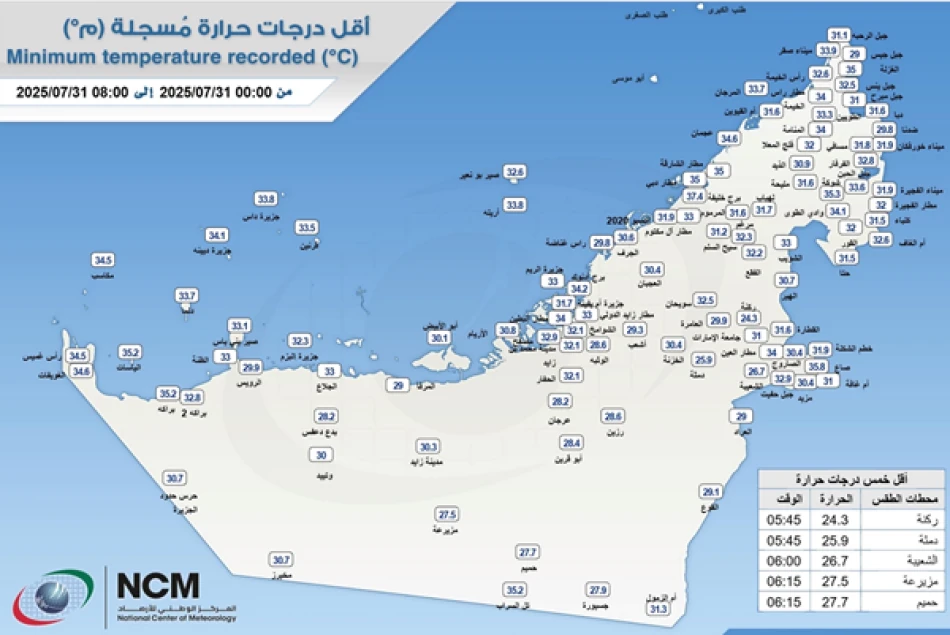
UAE Records Lowest Temperature in Latest Cold Snap
UAE Records Coolest Morning Temperature of 24.3°C as Winter Weather Arrives
The UAE experienced its lowest temperature reading this morning as the National Center of Meteorology recorded 24.3°C (75.7°F) in Al Ain's Rakna area at 5:45 AM local time, signaling the arrival of the country's mild winter season and providing relief from the intense summer heat that typically dominates the region.
A Welcome Respite from Desert Heat
This temperature reading, while considered warm by global standards, represents a significant cooling period for the UAE, where summer temperatures routinely exceed 45°C (113°F) and can reach up to 50°C (122°F) in desert areas. The 24.3°C morning temperature in Al Ain's Rakna district demonstrates the stark seasonal variation that characterizes the Arabian Peninsula's climate.
Al Ain: The UAE's Cooler Oasis
The fact that this minimum temperature was recorded in Al Ain comes as no surprise to regional climate observers. Known as the "Garden City" of the UAE, Al Ain consistently records lower temperatures than coastal cities like Dubai and Abu Dhabi due to its inland location and higher elevation. The city's numerous oases and green spaces also contribute to slightly more moderate temperatures through natural cooling effects.
Geographic Advantages
Al Ain's position near the Hajar Mountains and its distance from the humidity-trapping coastal areas create microclimatic conditions that often result in the country's most comfortable weather readings. This geographic advantage has made the city a popular retreat destination for UAE residents seeking respite from coastal humidity.
Economic and Lifestyle Implications
These cooler temperatures mark the beginning of the UAE's peak tourism and outdoor activity season, which runs from November through March. The hospitality sector, outdoor events industry, and construction companies all benefit significantly from this period of more moderate weather.
For residents, morning temperatures in the mid-20s Celsius range signal the start of outdoor dining season, increased physical activity, and reduced air conditioning costs. This seasonal shift typically leads to a noticeable uptick in outdoor events, festivals, and recreational activities across the Emirates.
Regional Climate Context
Compared to other Gulf Cooperation Council countries, the UAE's winter temperatures remain relatively moderate. While neighboring Saudi Arabia's northern regions can experience temperatures near freezing, and Oman's mountainous areas occasionally see single-digit Celsius readings, the UAE's coastal influence and lower latitude maintain warmer minimum temperatures.
This climatic stability has become one of the UAE's competitive advantages in attracting year-round business activity and tourism, particularly during the Northern Hemisphere's winter months when the country offers an attractive alternative to colder destinations.
 Layla Al Mansoori
Layla Al Mansoori







